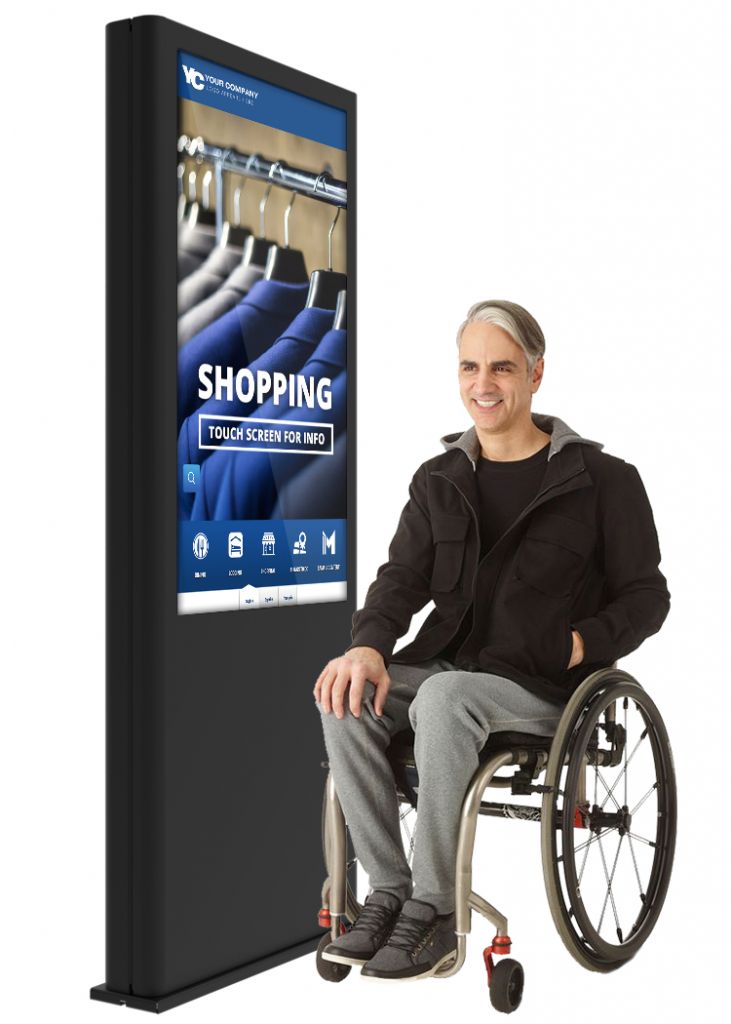
ADA COMPLIANT KIOSKS
All of Meridian’s Self Service Kiosks can be Built for ADA Compliance
The Americans with Disabilities Act of 1990 (ADA) prohibits discrimination and ensures equal opportunity for persons with disabilities in employment, State and local government services, public accommodations, commercial facilities, and transportation. ADA standards ensure that buildings and facilities are accessible to the more than 54 million Americans with disabilities.
ADA requirements apply to all new construction including office buildings, restaurants, hotels, theaters, doctors’ offices, pharmacies, retail stores, museums, libraries, parks and private schools.
If you are planning a new kiosk installation project – or are making updates to an existing project – these requirements may apply. You can find out more about the latest ADA standards on the US Department of Justice ADA website.
ADA DESIGN GUIDELINE CONSIDERATIONS
PHYSICAL
To address physical requirements, Meridian assesses the hardware and positions screen content within reach based on compliance guidelines. Content that is out of reach of the user may be moved down into the compliance area using buttons near the bottom of the screen.
VISUAL
To address accessibility for the visually impaired, Meridian utilizes the Mzero Software ADA accessibility features to present the screen content in Interactive Voice Response, a technology that allows the kiosk software to interact with users through use of voice prompts and Dual Tone Multiple Frequencies (DTMF) tones.
TELECOMMUNICATION
ADA accessibility for the deaf requires kiosks to provide a Telecommunication Device for the Deaf (TDD or TTY) service. Typically, a TDD device is a physical hardware component that must be installed on the kiosk and attached to a physical analog landline. Mzero offers an all-software solution, eliminating the need for additional TDD equipment.
LANGUAGE
In addition to accessibility features, Meridian offers multi-language support for displaying content in up to ten languages including English, Spanish, German, French, Italian, Portuguese, Japanese, Chinese, Korean and Arabic.
FOR ADDITIONAL INFORMATION, VISIT:
https://www.ada.gov/regs2010/2010ADAStandards/Guidance2010ADAstandards.htm
